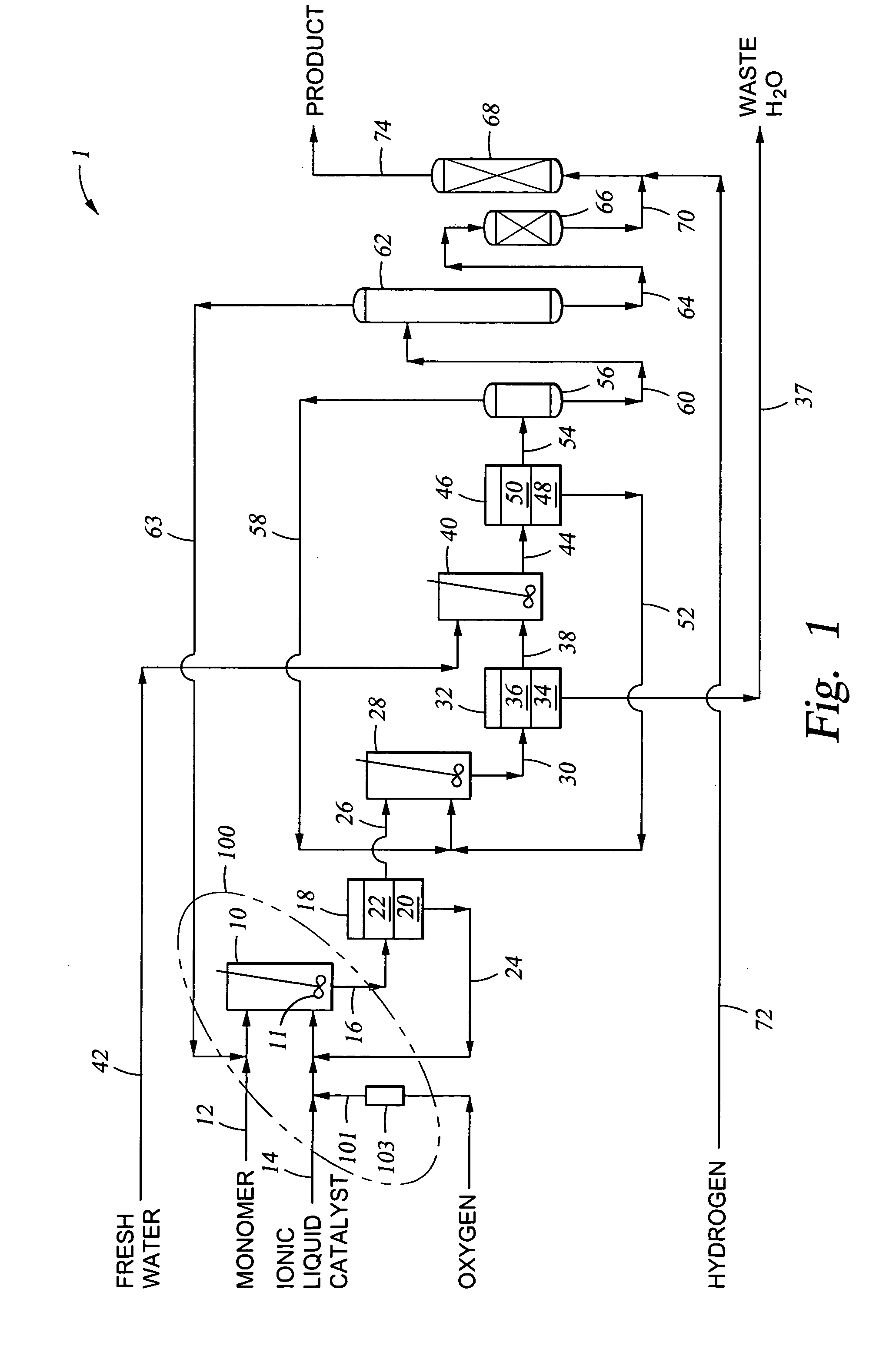Method and system to contact an ionic liquid catalyst with oxygen to improve a chemical reaction
a technology of ionic liquid and catalyst, which is applied in the direction of hydrocarbon preparation catalysts, chemical/physical processes, hydrocarbons, etc., can solve the problems that the ionic liquid catalyst used to produce pao can be quite expensive, and achieve the effect of increasing the activity of ionic liquid catalyst and increasing the conversion of monomers
- Summary
- Abstract
- Description
- Claims
- Application Information
AI Technical Summary
Benefits of technology
Problems solved by technology
Method used
Image
Examples
examples 1-4
Controlling Oxygen in Oligomerization of 1-Decene
[0046]The following examples, examples 1-4, illustrate the effect of oxygen concentration in the headspace in the presence of a constant 10-15 ppm water in the feed on some of the physical properties of the oligomer reaction product and the percentage of monomer converted in the reaction resulting from the continuous process for the oligomerization of 1-decene.
example 1
[0047]In a continuous process, 1-decene was fed at a rate of 2800 to 2900 grams / hour along with a catalyst feed (1.65:1 molar ratio AlCl3:TMA.HCl) of 73 grams / hour into a 1-gallon stirred-tank reactor. The reactor was equipped with external and internal cooling coils. The 1-decene feed contained 10 to 15 ppm water. The reactor level was controlled to roughly half of the volume, which gave residence times from 22 to 37 minutes. A pump-around loop consisting of a high shear mixer and gear pump was used to ensure adequate contact between 1-decene and catalyst. The reactor stirrer was set at 660 rpm. The reaction section was controlled from 15 to 20° C. under a headspace of 21% oxygen (balance nitrogen) at a pressure of 30 psig. The reactor effluent was quenched with water to deactivate the catalyst. The resulting product was distilled targeting less than 2 weight percent monomer and dimer. Monomer conversion of the water-quenched product was determined using gas chromatography. The oli...
example 2
[0049]The conditions for Example 1 were repeated with the exception of the concentration of the oxygen in the headspace gas, which was 4.5% (balance nitrogen). The properties of the product obtained in this example are presented in Table 2. This example demonstrates that 4.5% oxygen in the reaction headspace results in higher monomer conversion and higher product viscosity compared to a reaction under nitrogen alone (see Example 4). The percent monomer conversion and product viscosity is lower than that observed under higher concentrations of oxygen in the headspace (see Example 1).
PUM
| Property | Measurement | Unit |
|---|---|---|
| pressure | aaaaa | aaaaa |
| pressure | aaaaa | aaaaa |
| reaction temperature | aaaaa | aaaaa |
Abstract
Description
Claims
Application Information
 Login to View More
Login to View More - R&D
- Intellectual Property
- Life Sciences
- Materials
- Tech Scout
- Unparalleled Data Quality
- Higher Quality Content
- 60% Fewer Hallucinations
Browse by: Latest US Patents, China's latest patents, Technical Efficacy Thesaurus, Application Domain, Technology Topic, Popular Technical Reports.
© 2025 PatSnap. All rights reserved.Legal|Privacy policy|Modern Slavery Act Transparency Statement|Sitemap|About US| Contact US: help@patsnap.com

